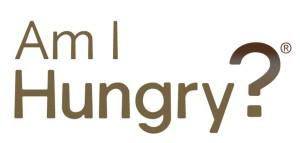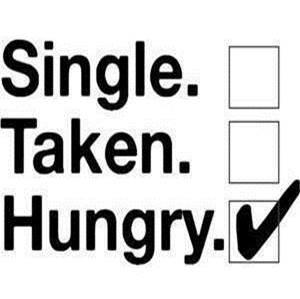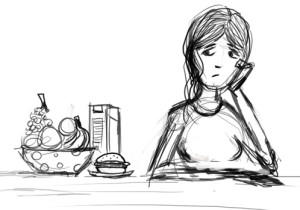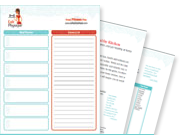By Michelle May, M.D.
You were born knowing exactly how much to eat. Hunger is your body’s way of telling you that you need fuel. By reconnecting with your instinctive signals, you can manage your eating without restrictive dieting and obsessing over every bite of food you put in your mouth.
Perhaps you’ve ignored hunger for so long that you’ve forgotten how to recognize it. Maybe you even blame hunger for your issues with food and see it as the enemy. Perhaps you confuse hunger with all the other reasons you feel like eating, like mealtime, boredom, stress, or tasty food.
At the same time, you may have learned to ignore the feeling of satisfaction so you eat until you’re stuffed and very uncomfortable.
Perhaps you “clean your plate,” “never waste food,” and “eat all your dinner if you want dessert,” instead of stopping when you’ve had enough. And you’ll perpetuate this cycle if you teach your children the same things.
Hunger is your instinctive guide for eating
Reconnecting with your hunger signals helps you manage your eating effortlessly. Here’s how:
- You’ll eat less food when you’re eating to satisfy physical hunger than if you eat to satisfy other needs. Think about it. If you aren’t hungry when you start eating, how do you know when to stop? When the food is gone of course!
- You’re more likely to choose foods that nourish you. If you aren’t hungry but you’re eating because you are sad, mad or glad, what kinds of foods do you want? That’s when you’re more likely to want chocolate, cookies, chips, or other snacks and comfort foods.
- Food actually tastes better when you’re physically hungry. Hunger really is the best seasoning—so you eat less but enjoy it more.
- You’ll feel more satisfied because food is great for reducing hunger but not so great for reducing boredom, stress or other triggers.
- You’ll notice you’re hungry before you get too hungry; that decreases overeating!
 If you’re not sure you’re hungry, you’re probably not.
If you’re not sure you’re hungry, you’re probably not.
To break out of the pattern of eating on autopilot, get in the habit of asking yourself, “Am I hungry?” every time you feel like eating. This simple but powerful question will help you recognize the difference between an urge to eat caused by the physical need for food from an urge to eat caused by head hunger.
Look for symptoms like hunger pangs, gnawing, growling, emptiness, low energy, shakiness, or headache. Notice that hunger is physical. It’s not a craving, a thought or a temptation. By focusing on hunger as your guide, you can become your own internal expert about when, what and how much to eat.
Food for Thought
- What specific signs of hunger do you usually have?
- What other thoughts and feelings do you confuse with hunger at times?
- What else could you do besides eat when you feel like eating even though you’re not hungry?
Michelle May, M.D. is a recovered yoyo dieter and the award-winning author of Eat What You Love, Love What You Eat: How to Break Your Eat-Repent-Repeat Cycle. Find other articles and resources at www.AmIHungry.com. Copyright Michelle May MD. Reprinted with permission.



